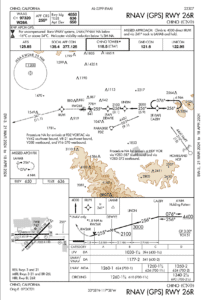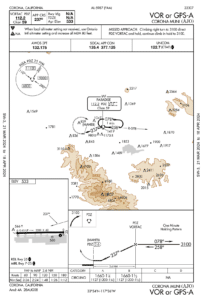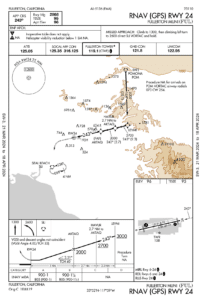If you read my “What is Your Line in the Sand” article in the March 2024 edition of The Mooney Flyer which I reposted here, you know that for the first time since getting my Instrument Ticket I let my currency lapse. I was one approach short, and I needed it two weeks prior. Those of you who don’t fly, there are requirements, which you would expect, to be able to file and fly under Instrument Flight Rules.
Despite thinking I was ahead of the game, I had found myself one approach short of being current. So, with my annual wrapped up and a post maintenance flight complete, I met a friend after work on a Tuesday evening.
He’s a great guy that I met through my CFII when I was working on my Instrument Ticket and looking for a safety pilot. He’s always happy to go up if it fits into his schedule, and I’m happy to have him in the right seat. Currently he is working on his CFI (Certified Flight Instructor) rating.
I like doing my simulated instrument work at night for a couple of reasons. First, it is typically less busy and SoCal Approach is less likely to deny a request for a practice approach. Second, although you are wearing some kind of a view limiting device to restrict your vision to just the instrument panel, during the day there are shadows that provide a crutch of a sort. At night, it can be much easier to lose track of what the plane is doing if you don’t have a good instrument scan going.
KCNO RNAV 26R
I told him the plan was to shoot the RNAV 26R at Chino (KCNO), then a hold at Paradise VOR (PDZ) followed by the GPS-A into Corona (KAJO), and back to the RNAV 24 at Fullerton (KFUL). It is a nice little round robin with an LPV (Localizer Performance with Vertical Guidance), the GPS-A which is like a VOR approach where you fly a heading from the VOR and descend to a specific altitude, and an LNAV (Lateral/Vertical Navigation) which supplies lateral guidance but you must step down to specific altitudes at fixes on the approach. All told it should be about an hour of flying.
We asked for flight following on the ground so we would have a specific squawk code and be put in touch with ATC after taking off. Shortly after beginning our turn to a heading of 120° tower turned us over, “Mooney 1015E, contact departure.”
They already knew my destination, but after checking in with SoCal I told them I wanted a practice approach at Chino. If they have combined sectors, there is the chance that as we got closer to Chino, that they would just tell me to contact the tower. SoCal told me to let the next sector know and gave me a frequency change.
I’ve flown this route a number of times and had climbed to 3,000′ heading direct to PDZ. Typically, ATC will have you depart PDZ on a heading of 080° to put you on a downwind leg, and then vector you around to intercept the LINDN fix at 3,000′. Knowing ahead of time what to expect is extremely helpful. Sometimes you get thrown a curveball, but not on this flight.
ATC asked my intentions after the low approach and I said, “We’d like a hold at Paradise followed by the GPS-A at Corona.”
He cleared us for the practice approach and said, “On the go, direct Paradise at or below 3,000′, back to me on this frequency.” I repeated it back to him and after a little more flying he switched us over to Chino Tower.
Usually, when flying practice approaches I hand fly all of them. The GFC500 autopilot is an amazing piece of equipment, but “just in case” something goes wrong, it is good to keep those hand flying skills up. However, on this flight I decided to fly the first approach on the autopilot. My reasoning was that while I have flown quite a bit of IMC on the autopilot, it had been some time since I used it for an approach and I wanted to practice one with the button pushes and getting it to intercept the glide slope.
If you don’t tell it what to do correctly to put you in the right place to intercept the glide slope it will just keep flying the plane along its merry way. But, if you do it right, it is like cheating it is so easy. The plane flies like it is on rails taking right to the runway and when you look up it is perfectly centered in front of you.
Upon reaching the DA (Decision Altitude) of 1,030′, which is 394′ AGL (Above Ground Level) I tilted my head back to see out the windscreen and there was runway 26R, all lit up. My head went back down, eyes back on the instruments, and pushed the TOGA (Take Off Go Around) button to put the flight director bars up. I had also planned to hand fly the rest of the flight so I pushed the autopilot disconnect, throttle in, and when I had vertical rate of climb raised the gear.
There was another plane in the pattern on 26L so tower had instructed me to fly runway heading and that he would call my turn. I did my best to stay on the correct heading and very soon he instructed, “turn on course, contact SoCal.”
KAJO GPS-A
It was a quiet evening and Approach said we could do as many turns in the hold as we wanted, to just let him know when we were inbound. In the real world you almost never fly a hold, if ATC needs to do something with you for spacing they will give you vectors.
So, it took some button pushing along with some mistakes while trying to climb back to 3,000′ and maintain a heading back to PDZ before I finally got the hold activated. Once I had it programmed flying the hold was easy and after one and a half turns in the hold I told ATC we were inbound for the approach. I had previously told him we wanted the RNAV 24 at Fullerton after the approach and he told us, “One the go, direct LEYMI (a fix on the approach to KFUL) at 3,000 and back to me on this frequency.”
That would make it easy. Depending on traffic, you will often be instructed to go back to Paradise (east of Corona) before being turned back to the west to Fullerton. Direct LEYMI on the go requires only a slight turn and you are on course to intercept final for the RNAV 24 to FKUL.
Before I could do that I first had to get the approach done to Corona (KAJO) and it is one that I have struggled with in the past. Now that I am no longer based at KAJO, the chances of me ever flying the approach in actual IMC (Instrument Meteorological Conditions) hovers right at zero, so why fly that approach? Because it is a challenge that requires attention to your vertical speed which you adjust with your power settings.
On the approach, you cross the Paradise VOR at 3,100′ before descending down to 1,660′ on a heading of 237°. The challenge is that you only have 3.6NM to make that descent and you need to lose 400′ per NM, but you are travelling at 91 knots, which means a descent rate of 600fpm give or take depending on the direction and speed of the wind.
On a normal approach I am in a +/- 450 fpm descent down the glideslope and have all the configurations for that profile memorized and on a placard. That means I have to adjust my normal settings to get the +/- 600fpm descent.
The idea on the approach is to get down to the MDA (Minimum Descent Altitude) before reaching the missed approach point so that you can level off and look for the runway. If you don’t get to the MDA, you may miss (no pun intended) the chance to get below the clouds and complete the approach.
My mistake on the particular approach is that I usually don’t descend fast enough and find myself above the MDA at the missed approach point. That’s not if I was actually trying to get below a cloud layer.
Anyway, back to the flight. I had announced to ATC that I was inbound, he turned us loose on the approach and gave us a frequency change to the CTAF (Common Traffic Advisory Frequency) so that I could make position reports and listen to the other traffic.
There were a couple other planes in the pattern and I announced that we would remain north of the airport. That would keeps us on the opposite side of the field from them. I lowered my gear, we reached the Paradise VOR, I turned to the heading, and reduced power to begin the descent.
I kept focused on that descent rate, making slight adjustments to the throttle to try and get down before the MDA. Just before reaching the MAP (Missed Approach Point) I leveled off at the MDA, tilted my head back to look out the windscreen, and was rewarded with my old home base of KAJO right there in front of me.
KFUL RNAV 24
Satisfied, I put my head back down, banked slightly to the right to stay north of the airport, added throttle to get a positive rate of climb, and sucked the gear back up. In the climb I announced on CTAF that we were departing to the west and switched back over to SoCal Approach.
He called out some traffic to us which my friend easily spotted. It is so much easier to find planes at night when they are a little above your altitude and not lost in the ground clutter. Approach gave us a handoff to the next sector along with a “let them know you have the traffic.”
Did I mention how close these airports are to each other? By this time we were almost to LEYMI, and the new controller cleared us for the practice approach, “no separation services provided,” and handed us off to Fullerton Tower.
I called up tower who cleared us to land, although we were still 10 miles out, and I began tracking the needle as I stepped down altitudes at each fix. Upon reaching 1,000′ MSL, as is my typical routine, I started calling out every 10′ of altitude until we got to the MDA of 900′ and I looked up.
I was just slightly left of centerline, but commented, “I can make that work” as I took off the hood and banked ever so slightly to the right to line up.
One hour of flying, three approaches with a hold, and the currency gets pushed out again. As I was driving home from the airport I made a new commitment to myself. It’s work going up to shoot approaches, and doing it under simulated IMC isn’t exactly fun, but it is good practice. So, going forward I am going to go up at least every other month to shoot approaches with a safety pilot, regardless of whether I need them for currency and if I have enough actual approaches to be current.
I see it as an opportunity to hone the hand flying skills and spend time with friends flying. I believe that is what is called a win/win.
I didn’t get any pictures, tough to do when you can’t look outside the plane, but my friend did take a couple short videos and put together a reel. It looks like it was a beautiful night, I just missed all of it…





